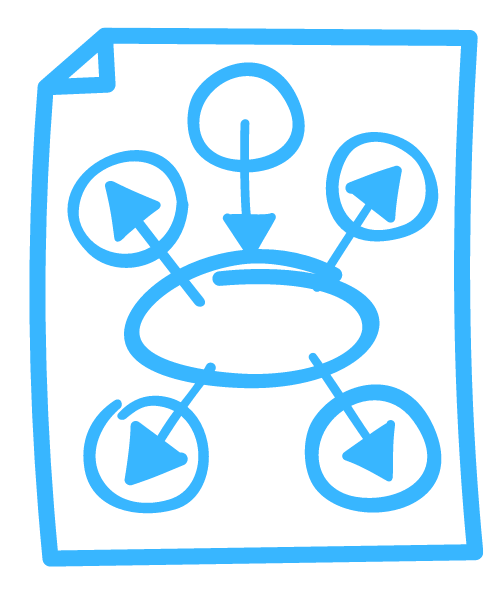Today, businesses have to embrace effective digital solutions to remain competitive. Especially if you’re in commerce, logistics, insurance, and other dense markets.
Still, many organizations hesitate to leverage technology. This is often deterred by development cost, which sometimes exceeds $200,000. This concern, though, doesn’t apply to MVP product development.
Today, you will learn how to create MVP and ensure its success from the experts of the AdvantISS team.
The Advantages of MVP in Development
GM Insights experts forecast the custom software development segment will reach a value of $198.6 billion by 2032. This includes a significant portion of MVP development for startups and businesses.
But what exactly does the term MVP stand for? Minimum Viable Product is a digital solution that delivers value to its audience with just its core functionality. Usually, it’s characterized by:
- User-friendly design.
- Lack of critical bugs.
- Basic yet valuable functionality.
- Technological innovations.
In essence, an MVP offers functionality that your users need to solve their problems. This way, you launch something valuable, and you can tweak it as you go based on what your users tell you.
The key advantages of startup MVP lie in:
- Reduced time to market.
- Lower development costs.
- Accessibility for businesses of all scales.
- Potential for scaling.
- Opportunity to monetize the product and quickly achieve ROI.
In other words, by launching MVP, you build a foundation for a fully-featured product. You use the initial income and feedback from your users to enhance your tech offerings.
However, this works only if your concept hits the mark and the product is valuable. So, let’s dive into how to build an MVP that becomes a success.
The Complete Guide to the MVP Process: From Concept to Market Leader
The lifecycle of a minimum viable product isn’t all that different from traditional development. But it does have several purely conceptual differences. Primarily, this concerns MVP’s scalability and reliance on user feedback.
For example, if you want to launch an MVP of a mobile banking app, you may:
- Basic sign-up and login processes.
- Display basic account information (balance, recent transactions, and account details).
- Enable users to pay utility bills, credit card bills, etc.
- Allow users to send money to other accounts within the same bank.
Once you make your MVP live and collect feedback, you can add more features:
- Biometric logins (fingerprint or facial recognition).
- Users can deposit checks using their smartphone camera.
- Ability to apply for loans or credit lines and track application status.
- Help users find the nearest ATM using their mobile device.
- Allow users to set and track savings objectives.
- Enable users to send money to anyone, not just within the same bank.
Your goal is to offer something that sets your MVP apart from the rest. You can do this in several ways: implement something truly unique or combine the best features out there into one killer app.
But how exactly do you go through every MVP stage to keep everything on track? AdvantiSS specialists suggest that you follow these guidelines.
1. Idea (and Discovery)
Every project starts with an idea.
More precisely, with coming up with a concept that answers some big questions:
- What are we doing?
- Why are we doing it?
- Who are we doing it for?
- What do we do with it next?
- What comes after MVP?
- What benefit do we get?

This stage is not just about coming up with features or deciding on the technology stack. Here, you’ve got to understand the true purpose behind the product. Ultimately, your ‘why’ will attract users who share your vision and values. As Simon Sinek puts it in his book “Start with Why:”
“People don’t buy WHAT you do, they buy WHY you do it.”
Simon Sinek
If the idea is already formed, the next step is the discovery phase. This is when the project team gets down to:
- Describing the concept.
- Sketching out the design.
- Writing down user stories.
- Formulating project requirements.
- Noting down key business goals and methods of achieving them.
The results you obtain during this stage form the foundation of the future digital product.
2. Market Research
When planning to launch a product, ensure it’s viable. Here are some tips that will guide you through this stage.
First, know who you’re building for.
Create detailed profiles for each segment. Outline their background, pain points, and what results they want to achieve when using your product. If possible, do surveys or one-on-one interviews with your prospects to uncover their needs, preferences, and frustrations.

Also, you may go to forums or social media platforms to grasp what your target audience is talking about. Reviews of competitor products will give you an idea of what users appreciate and what they feel is missing.
Analyze the market: gather and process information about your competitors. List out your direct and indirect competition.
To get comprehensive insights, look at competitors from different angles:
- Develop a positioning map to visually represent where each competitor stands in terms of price and perceived value.
- Create a detailed comparison chart of features.
- Estimate the products’ usability. You may go to UsabilityHub to get feedback on UX.
- Analyze competitors’ search engine optimization (SEO) strategies, keyword rankings, and website traffic. Use SEMrush, Ahrefs, SimilarWeb, or other tools.
- Understand social media presence, engagement, and audience growth trends. BuzzSumo or Sprout Social will help you gain these insights.
- Study what users are saying about your competition.
- Investigate patents filed by competitors to reveal directions in their R&D and innovation strategies.
- Discover their funding histories to get clues about their growth strategy and financial health.
You should end up with a solid business plan that lays out your USP, how you’ll make money, how your MVP will work, and how to keep your audience coming back for more.
3. Proof-of-Concept (POC)
This stage is highly important in the MVP timeline. Mainly, because it helps validate technical aspects and feasibility before committing resources to develop a full-scale product.
Even if a similar product exists and functions in the market, you can’t skip a POC. You’ll want to introduce unique features, integration capabilities, or performance improvements that differentiate your product from competitors. This stage will enable you to figure out whether the concept can work in a general sense and if the technology stack is viable.
Have original ideas that the industry hasn’t seen yet? POC is the first step you usually take to confirm if the concept is technically feasible and can function as envisioned. This may secure stakeholder buy-in and potentially attract early investment.

4. Plan and Roadmap
At this point, you’re probably asking yourself, “How to build a minimum viable product?” You’ll get an answer to this question at the planning stage.
The tricky part of this phase is its deceptive nature.
You might think it’s all about just getting your MVP out there. But that’s not the whole picture. You need to look a bit further than the launch day.

When creating a roadmap, consider the following:
- Key functionality to be available at the release.
- A tech stack built for scaling.
- A list of features you plan to implement later.
- A product feature update schedule.
- How often do you incorporate user feedback into improvements?
- A development timeline, and approximate calculations of achieving positive ROI.
Formulating a solid work plan means truly understanding the product’s scale and potential lifecycle.
5. Finding Vendors
If you are involved in MVP in entrepreneurship or starting up your own venture, you will need technical experts to bring the product to life.
You may already have a team within your organization. But sometimes you might find you need more hands to get your software market-ready on schedule.
Whether you hire a team, outsource your project, or simply expand your staff, pay attention to:
- Knowledge of the tech stack you plan to use.
- Experience in implementing similar projects.
- Portfolio.
- Ratings and reviews from previous clients.
- Cost of services.
If the contractor’s offer meets your requirements, you’re all set to kick things off. Just make sure to get all the paperwork in order—sign a cooperation agreement, NDA, or other necessary documents.
6. Build an MVP: The Technical Side
Now, the developers work in full swing—prototyping, coding, testing, and designing. They control this stage to turn your vision into a functional and user-engaging MVP.
But you’ve got a key role to play, too. As the initiator and project owner, your job is to keep the development team focused on the important things.
That said, you, your project manager, or business analyst should keep an eye on the implementation flow to make sure the final product matches the original vision and meets users’ needs.

Communication between the vendor and product owner typically happens through regular meetings and project management tools. Usually, there are daily meetings where both sides discuss what’s been done, what’s next, and any roadblocks.
This way, all the parties make sure the project stays on track, changes are made quickly if needed, and the final product is exactly what you’re looking for.
7. Marketing
Marketing isn’t something you just do once. It will require ongoing effort throughout all stages of MVP entrepreneurship. To ensure the success of your startup, consistently promote the coming digital product.
For promotion, you can apply all known methods:
- Partner with influencers who resonate with your target audience.
- Go to social networks where your prospects are most active.
- Use streaming platforms for engaging content.
- Send email newsletters to keep your audience in the loop.
- Create SEO-friendly landing pages and articles to drive organic traffic.
- Consider link building and PR to draw referral traffic to your website and boost domain authority.
- Invest in ads to cover a broader audience.
Remember!
Your marketing efforts are important both before and after the MVP launch.
As you market your product before it goes officially live, you warm up your target audience, learn their expectations, and attract early adopters. After the launch, marketing will help you keep the conversation with your users going.
And, most importantly, you’ll focus on scaling the product’s reach and growing your user base.

8. Hit the Market with Your MVP
Launching with MVP technology means you can enter the market faster. But, at the same time, it leaves little room for errors.
Before releasing your application, ensure that everything works correctly as outlined in your release roadmap. In other words, test the digital product for bugs in basic functions, problems with interface adaptability, connection stability, and performance.
You’ll have chances to tweak the look or refine the concept later on. But technical issues at the start will lead to an immediate loss of audience, even before they’ve given your product a fair shot.
9. Gathering Feedback
Actively communicate with consumers after launching an MVP.
None of the modeled user cases will give you an understanding of how the audience perceives your software. Real feedback, however, will.
From this moment, the MVP strategy could take one of two paths:
- The product remains relevant, and you move on to the next big thing.
- You listen to what your users are saying—both the good and the bad—to make your product even better.
Which route should you take? Well, that’s totally up to you. However, going with the second approach proves to be smarter, as you’ve already got your audience’s attention and a foundation to build on.
Skipping out on the chance to improve based on user feedback? That’s a misstep that can hurt your startup’s reputation in the long run.
10. Improvement
What you do next really depends on what you’ve got in mind for your MVP. If you want it to evolve, then your course of action will be about collecting feedback, updating the tech stack, adding new features, and scaling the project in every way.
However, if the MVP lifecycle was planned to be short, then your focus might be on collecting revenue and periodically fixing minor bugs.
Are you ready to create an MVP?
These tips will guide you through developing and launching your MVP. But, honestly, how well it does is largely up to how experienced you are in implementing similar projects.
If you have been working in the industry for years and have a good understanding of the problems and how to solve them, you’ll nail it. However, as you enter the market without sufficient preparation, it might be wiser to collaborate with those who’ve been working within the same business domain.
AdnantiSS is always here to help you, whether it’s building your MVP from the ground up or upgrading it. Delegate your task to AdvantISS experts and get a product that will conquer the market and bring in profits.
